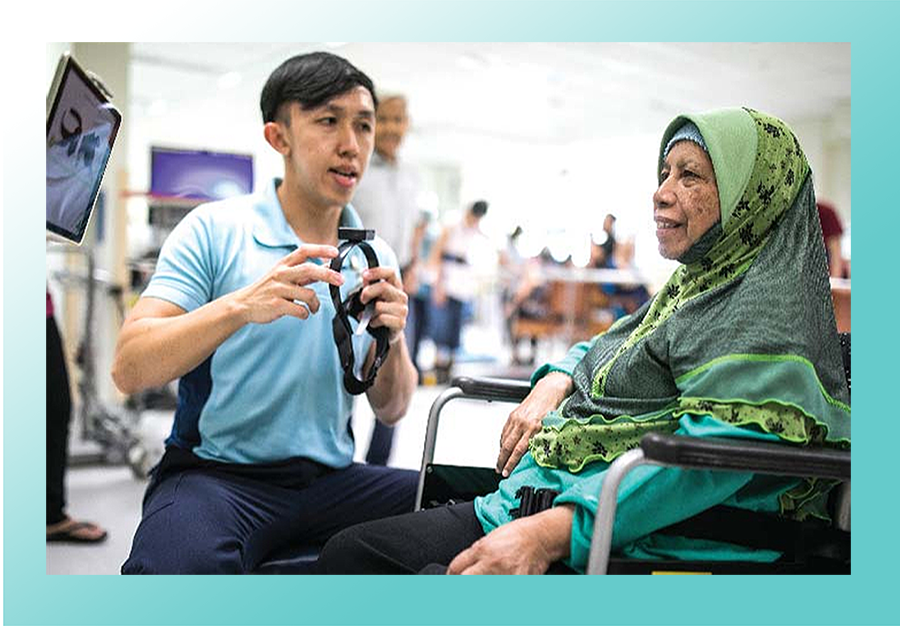Smart Rehab System Boosts Productivity

Imagine being able to conduct home-based rehab therapy for multiple patients without leaving your office, and being able to monitor their progress at your own time and pace.
The Smart Health TeleRehab system, developed by NUS Department of Electrical & Computer Engineering and Saw Swee Hock School of Public Health, and piloted by Integrated Health Information Systems (IHiS) and T-Rehab, a startup by NUS, aims to do this by allowing physiotherapists to carry out exercise sessions remotely, with patients using a computer tablet and wearable sensors.
It is suitable for those who are recovering from conditions such as stroke and fractures, and is extremely useful for those who have problems visiting the hospital have trouble visiting the hospital for physiotherapy sessions.
TeleRehab can also help patients who require daily rehab sessions achieve their recommended exercise intensity. Instead of visiting the rehab centre for sessions every day, they can supplement their rehab visits with daily home exercises using TeleRehab.
The therapy is tailored to patients’ needs and is available in five languages. Physiotherapists can use the system to monitor their patients’ progress and ensure that exercises are carried out regularly. Based on the patients’ progress, the therapists will make adjustments to their prescribed exercises accordingly.
St Luke’s Hospital is one of the 15 service providers that have adopted this system.
“With TeleRehab, physiotherapists may prescribe exercises for clients to do on their own at home and monitor their progress at any time,” said Gan Jing Tap, Physiotherapist, St Luke’s Hospital (SLH), in an interview with AIC’s caregivers’ magazine NEXTSTEP. “This saves (clients) time, money and effort as it may be difficult for them to travel to the hospital frequently for therapy.”
The beauty of using Smart Health Rehab lies in how it is a major time-saver for both patients and physiotherapists. A time and motion study conducted by IHiS and NUS in 2015 showed that this service led to productivity gains of more than 30%. Patients can cut down the number of trips they must make to the rehab centre or hospital. Physiotherapists can attend to more patients in a day too – not only can they serve patients remotely, the reduced number of visits to their rehab centres frees up resources for them to attend to more patients.
Here's how it works:



“After I had a stroke last year, I couldn’t stand up or walk. I was referred to St Luke’s Hospital for rehabilitation and had therapy there about two to three times a week. After I was introduced to Smart Health TeleRehab, I use it at home three times a week, for half an hour per session,” said 71-year-old Shamsiah Bte Sudak, a patient on the programme.
She added,” The screen shows simple steps which I can easily follow, and I like that it has a Malay language option so I can understand the instructions. It also motivates me to keep up with my exercises. I encourage others to use the service as I have made good progress in my recovery thanks to it.”
Visit www.ihis.com.sg/telerehab to find out more.
